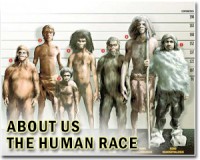| . |  |
. |
Paris (AFP) Oct 6, 2009 Remember what it was like, a dozen years or so ago, when you tried to communicate with someone on the other side of the world? The truncated conversations down crackly copper wires? The chore of sending papers or pictures by post -- by "snail mail"? The insane costs of long-distance contact of almost any kind? It's no surprise why we have embraced digital technology with such passion, why we have leapt to Internet and email without even a backward glance. Today, letters, documents and images are dispatched instantly, flawlessly and for free to a recipient thousands of kilometres (miles) away, and phone calls cost just a tiny fraction of what they did in the past. Physicists Charles Kao, Willard Boyle and George Smith won the Nobel Prize on Tuesday for their part in what many see as a revolution of the mind, changing perspectives about geography and human relationships, as much as it is a revolution of technology. Kao won half the prize for realising the potential of optical fibres, whose cables now girdle the Earth on the sea floor and across land, delivering data by laser pulse through glass strands. Boyle and Smith shared a quarter each of the coveted prize for inventing the charge-coupled device (CCD), a semiconductor sensor that converts light into electrical signals, in 1969. It became the "electronic eye" of the digital camera, used not only by happy-snapping holidaymakers, but also by doctors to get images inside the human body for microsurgery, and by space probes, to get pictures of Saturn and other planets. "It's taken 30 years [for Nobel recognition], but the importance of these two technologies is obvious," said Phillip Schewe of the American Institute of Physics. "Ours is the age of information and images, and no two things better symbolise this than the Internet and digital cameras," said Robert Kirby-Harris, chief executive at the Institute of Physics (IOP) in London. "From kilobytes to gigabytes, and now to petabytes and exabytes, information has never been so free-flowing or, with the development of CCD, so instantly visual. "These incredible inventors who have been responsible for transforming the world in which we live very much deserve their prize." The idea of using glass tubes to transmit information dates back to the 1920, with experiments to send images through thin fibres. But the outcome was disappointing. Whenever the tubes touched, or their surface was scratched, the light "leaked" away. In 1966, Kao, a young Shanghai-born engineer working at the Standard Telecommunication Laboratories (STL) in Harlow, near London, determined that the main problem lay with iron ions in the glass, which absorbed and scattered the light. His solution was fused silica, a glass-making process that would be without the impurities. The difficulty, though, was that fused silica has a highly melting point, and it was tough to make and manipulate such materials on a commercial scale. Four years afterward, the technical breakthrough came at Corning Glass Works in the United States. Optical fibre was born, and has been continuously improved since then, thanks to chemical "doping" in the manufacturing process to help mitigate light loss. Today, a pulse sent down a modern optical fibre loses less than five percent of its light after one kilometre (five-eighths of a mile). The first transatlantic fibre-optic was installed in 1988, but the real bounty of this technology started to be realised in the late Nineties, when cheap lasers, light repeaters and computing power to handle large packets of data became available. Kao was "a revolutionary," said Sir Peter Knight, senior principal at Imperial College London. "He had already spotted the communications opportunities, and therefore the great distances light could travel, while others were still thinking in metres (yards)." Share This Article With Planet Earth
Related Links All About Human Beings and How We Got To Be Here
 Study: Man did not evolve from apes
Study: Man did not evolve from apesKent, Ohio (UPI) Oct 1, 2009 A U.S. biological anthropologist says he's determined humans did not evolve from apes, but, rather, apes evolved from humans. Kent State University Professor C. Owen Lovejoy, who specializes in the study of human origins, said his findings came from a study of Ardipithecus ramidus, a hominid species that lived 4.4 million years ago in what now is Ethiopia. "People often think we ... read more |
|
| The content herein, unless otherwise known to be public domain, are Copyright 1995-2009 - SpaceDaily. AFP and UPI Wire Stories are copyright Agence France-Presse and United Press International. ESA Portal Reports are copyright European Space Agency. All NASA sourced material is public domain. Additional copyrights may apply in whole or part to other bona fide parties. Advertising does not imply endorsement,agreement or approval of any opinions, statements or information provided by SpaceDaily on any Web page published or hosted by SpaceDaily. Privacy Statement |